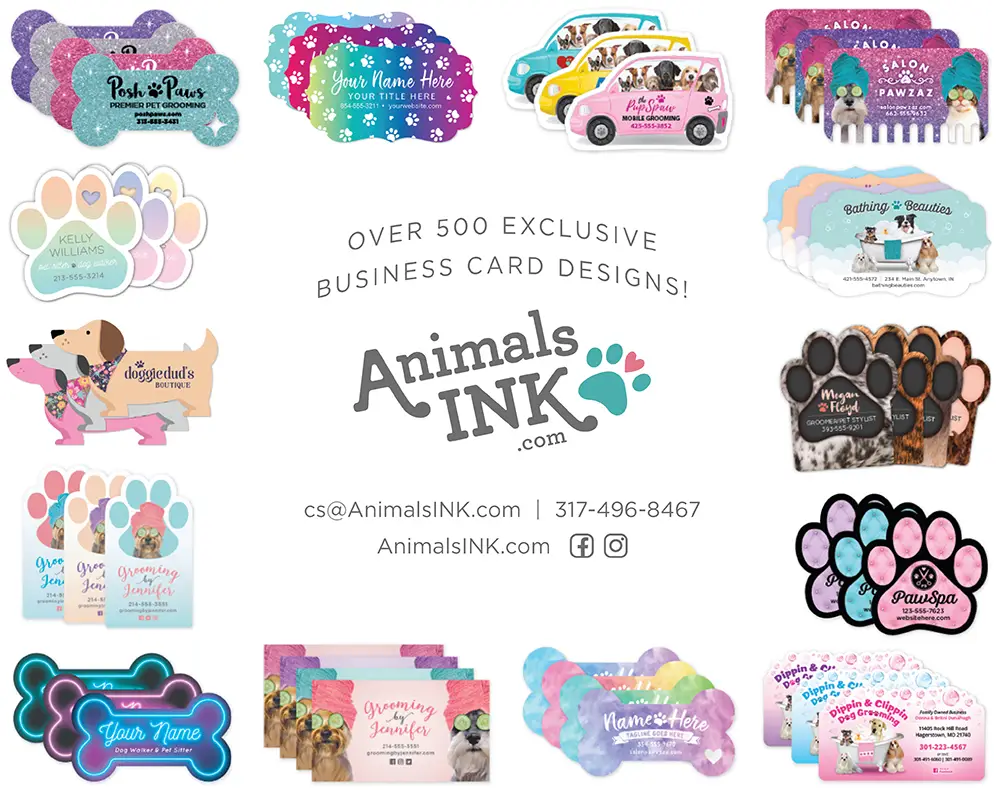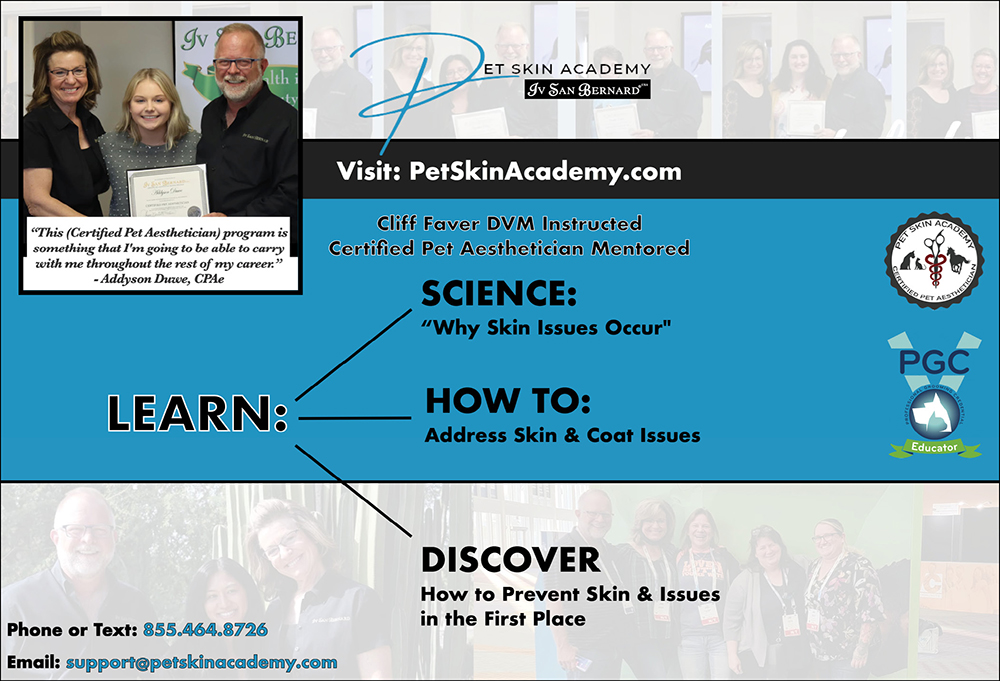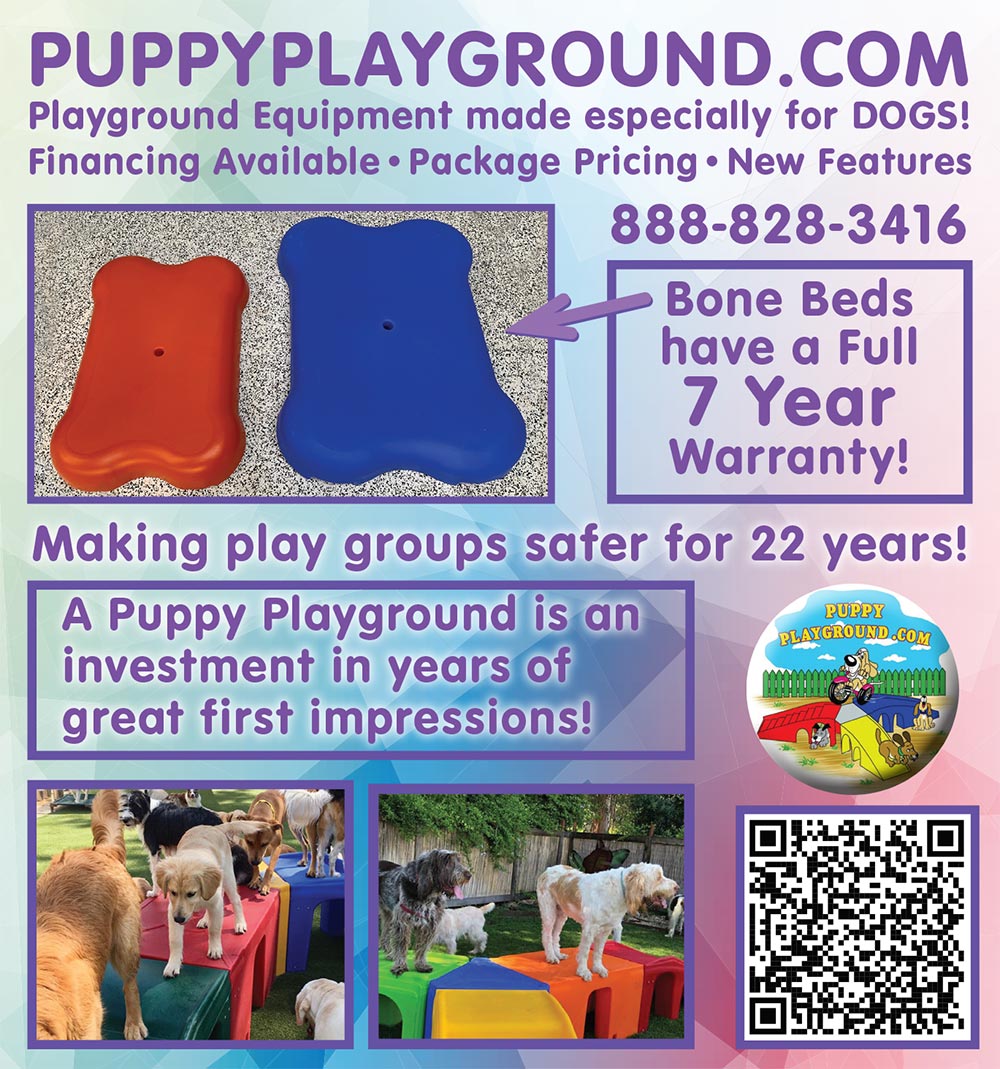
 dvances in technology can often redefine the history of the whole world. Thankfully, technological advances have also made our jobs as groomers easier and safer. Clippers are more efficient. Brushes brush better. There are combs to fit every coat type and every styling need. Towels absorb better. There are now multiple options with which to safely dry every kind of pet. The array of choices in shears is dazzling. Better tables, tubs, shampoos and conditioners abound. UV light kills germs we can’t see. But no advance in grooming technology has amazed me more than the new microbubble technology that is taking clean to a whole new level.
dvances in technology can often redefine the history of the whole world. Thankfully, technological advances have also made our jobs as groomers easier and safer. Clippers are more efficient. Brushes brush better. There are combs to fit every coat type and every styling need. Towels absorb better. There are now multiple options with which to safely dry every kind of pet. The array of choices in shears is dazzling. Better tables, tubs, shampoos and conditioners abound. UV light kills germs we can’t see. But no advance in grooming technology has amazed me more than the new microbubble technology that is taking clean to a whole new level.The microbubble technology of today is generally regarded as a Japanese invention. Different kinds of machines create different kinds of microbubbles that are smaller than some cells and can easily pass inside the skin of a mammal or be used for medical or other scientific purposes. The Public Relations Office of the Government of Japan published an article on their website in 2017 citing the development of microbubble technology by Japanese researchers in the 1990s.
In an article entitled, “The Mighty Power of Microbubbles,” they say: “Microbubble technologies developed in Japan are having an impact in a wide range of fields . . . ‘Microbubbles’ is a collective term for air bubbles with a diameter of 100 μm (0.1 mm) or less, studies into which began in Japan in the 1990s. Microbubbles are characterized by the extremely low rate of ascent [i.e., rising to the surface] of the air bubbles . . . accumulating in the liquid for a long time. Large quantities of abundantly fine microbubbles are generated and the surface area in the liquid is large. Utilizing these characteristics, microbubbles have many applications including effluent [i.e., washing away] treatment, cleaning, the aquaculture of fish and seafood, the hydroponic culture of vegetables, beauty care and home bathing.
“Ordinary air bubbles also have the effect of absorbing dirt, but microbubbles are capable of absorbing far more dirt because of their unique characteristics. Moreover, microbubbles do not have an environmental burden because they are not detergents,” says Toshinori Makuta, Associate Professor at the Department of Mechanical Systems Engineering, Yamagata University.2
Dr. Zarowny discovered that fellow veterinarians had incorporated the technology into their primary dermatology protocols and had teamed with groomers to continue the process to promote long-term skin health. While he was excited about the potential, his sponsors could not see a fit to their corporate structure. Having purchased and brought a machine back to Canada, he looked elsewhere for a business partner that ultimately helped to develop the technology for use in the veterinary and pet industry here.
Microbubbles are particularly useful with mammals, including humans and dogs, because they have skin with pores and hair follicles that go down inside the outer layers of skin, making small openings into which bacteria, dirt, fungi, viruses, allergens, etc., can hide.
I have personally seen microbubble technology’s impact in the Asian grooming industry. In 2017, I was privileged to go to Taiwan as a guest of their Congress for a conference on human rights. I saw a dog grooming shop and asked to drop in for a visit with my host to look at their procedures. The ladies, who fortunately spoke far more English than I spoke Chinese, graciously showed me around their shop. One of the first things I noticed was that every dog received a microbubble bath in addition to the normal grooming procedures. I asked about it since I had heard something about microbubble technology being used in grooming. They told me they got the machines from Japan and that every groomer they knew in East Asia was using this technology, as it kept the dogs very clean with healthier skin.
Prior to the pandemic, my grooming shop purchased a microbubble machine designed for the pet industry. Our area was inundated with skunk attacks on dogs, and we found that a single microbubble bath was often the most successful way to treat skunk, though some required a repeat treatment after a few days. After purchasing a second machine due to increased demand for a range of skin issues and much cleaner dogs, we are still treating hot spots, yeast infections and a number of other skin issues in our clients to great effect.
We enhanced our reputation as well as our bottom line. We paid the machines off in installments and showed a significant profit from the very first month and each month after. It was well worth the investment and drew in many new customers, especially during skunking season.
We received a phone call from the boy’s father saying, “I heard you have a microbubble machine. We were hoping to see if it would help my son.” He explained the condition and I immediately opened our shop and tubs to this family at no charge. The skin cells caked the tub wall when he was done. It was the most successful bath the child ever had! He laughed and giggled throughout the entire process. The family documented his progress over the weeks of his visits for a national Ichthyosis support group. Ultimately, the family purchased a microbubble machine for themselves.
-Toshinori Makuta
The University of Colorado at Boulder’s website reports the advances they are making in microbubble applications for use in extreme injuries and even on the battlefield. “Injecting trillions of microscopic bubbles into severely injured people may help keep them alive until arrival at a hospital for treatment. The technique, which essentially creates a ‘third lung,’ would provide oxygen to patients whose lungs cannot function efficiently because of trauma.”3
Based on my personal experience, here is what I recommend groomers look for when considering adding this amazing technology to their services:
- The size of the bubbles produced. They need to be 2-25 microns in order to get inside the dermis.
- Good negative ion production. This helps grab the dirt and other harmful substances on the skin.
- UL Listed. Underwriters Laboratory tests and certifies the safety of electronic equipment.
- Warranties and packages that come with it.
- Three hoses in the machine. One for intaking tub water, one to circulate bubbles in the standing water and one to wand over the top of the pet that is above the water. If the machine only has two hoses, one to pull in water and one to discharge the bubbles, you lose the ability to treat the entire animal.
- Good reviews from other groomers who use the machine.
- Case studies of that brand’s results in pet grooming. Be sure there are before-and-after pictures as proof that these machines are doing their job.
- Customer support is critical because this is a new technology and should include training at the start, as well as on-going access to support throughout your ownership of the machine.
Adding microbubble technology to my business has had a significant impact on the wellbeing of the dogs I care about, as well as on our bottom line. This is one new technology that I can’t imagine how I did without for so long.
- Gramiak, R., Shah, PM. “Investigative Radiology.” 1968; 3:356–366. Ultrasound cardiography: Contrast studies in anatomy and function. Radiology 1969;92:939.
- Sakurai, H. (2017 Dec). “The Mighty Power of Microbubbles.” Public Relations Office Government of Japan. https://www.gov-online.go.jp/eng/publicity/book/hlj/html/201712/201712_09_en.html
- Scott, J. “Technology could save lives on battlefield, home front.” University of Colorado at Boulder. https://www.colorado.edu/research/report/2016-17/microbubble-technology


